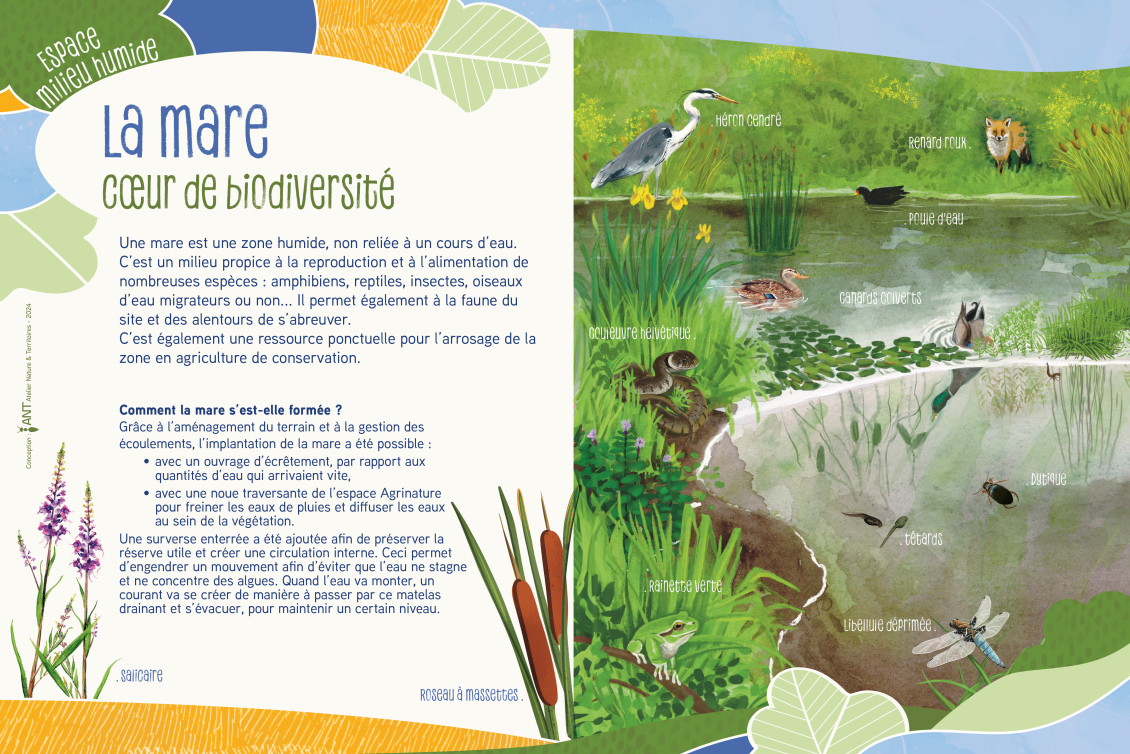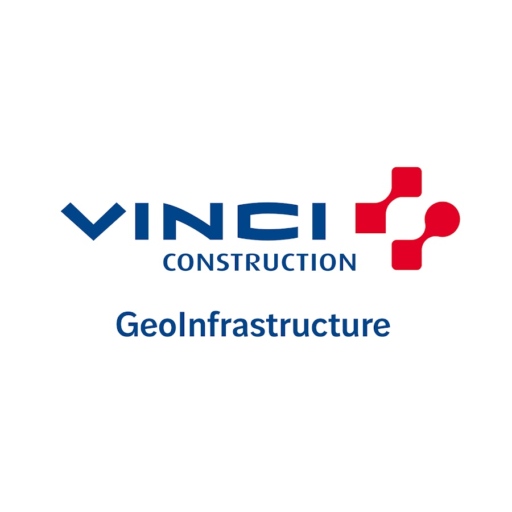The pond: a hub of biodiversity
A pond is a wetland that is not connected to a waterway. This environment supports the breeding and feeding of many species: amphibians, reptiles, insects, and both migratory and resident waterbirds. It is also a watering spot for local and visiting wildlife.
Additionally, it can occasionally serve to irrigate the conservation agriculture area.

How was the pond formed?
Thanks to the lay of the land and the management of runoff, the formation of the pond was made possible with:
• a flow-regulating structure for fast-flowing water volumes,
• a swale crossing through the Agrinature space, to slow the flow of rainwater and allow it to seep into the vegetation.
A buried overflow pipe was added to preserve water holding capacity and create internal circulation. It generates movement that prevents water stagnation and excessive algae growth. When the water rises, a current forms and water is evacuated through this drainage structure, keeping the water at an optimal level.

